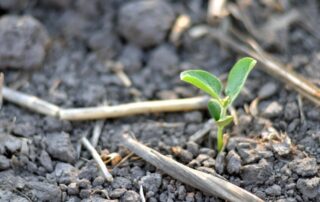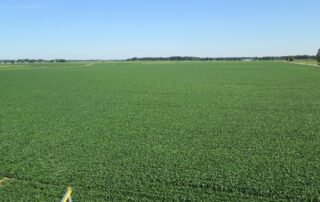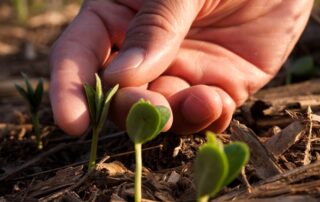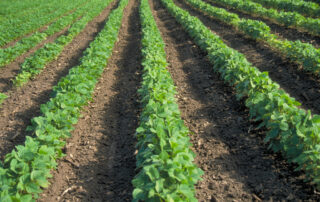Agronomy: Maximize Yield and Profits through Soybean Seeding Rate Webinar
For soybean growers facing high seed costs and low commodity prices, any insights into reaching optimal seeding rates and planting times can help raise profit margins. The Plant Management Network (PMN) has released a new presentation entitled “Risk and Benefits of Changing Farmers' Common Soybean Seeding Rates” to help growers and crop consultants maximize economic returns on soybean seed investment. The webcast, developed by Peter Kyveryga, Director of Analytics at the Iowa Soybean Association, analyzes the results of multi-year field studies measuring how seeding rates, planting time, and other factors affect yield. The data indicates that planting date was [...]
Agronomy: U of I Research News: Bioreactors ready for the big time
Bioreactors are passive filtration systems that can reduce nitrate losses from farm fields. Most bioreactors are simple pits filled with wood chips; bacteria on the wood chips remove 25 to 45 percent of the nitrate in runoff water. Research summarized in a special issue of the Journal of Environmental Quality highlights their potential applications and provides insight into design options. URBANA, Ill. – Last summer, the Gulf of Mexico’s “dead zone” spanned more than 6,400 square miles, more than three times the size it should have been, according to the Gulf Hypoxia Task Force. Nitrogen runoff from farms along [...]
Agronomy: Soybean Planting Depth Matters
Soybean seed is very sensitive to planting depth, so producers need to be careful and get their crop off to a good start. Planting depth surveys revealed that only 20 percent of the fields planted with drills were planted at or near the intended depth. An even bigger concern is that in 68 percent of the fields, the seed was planted too deep, a condition known to delay emergence. Under most conditions, soybeans should be planted between 1 and 1.5 inches deep. As a general rule, plant at the shallower end of the range under the following conditions: Early [...]
Plant and Soil Health: Webinar: Should Manure be Part of your Crop Production?
Applying manure can be a beneficial practice that increases organic matter and adds nutrients to the soil, but there are various factors to be mindful of as well. University of Wisconsin – Extension reps Kevin Erb, CCA, and Morgan Hayes, Clinical Assistant Professor, discuss ways to maximize the benefits when applying manure. Key Takeaways: Be careful to not apply manure to ground that is already wet. Discharge is not acceptable. Applying manure can supplement the soil with nitrogen, phosphorus and potassium, as well as micronutrients like boron, sulfur and zinc. Manure can help mitigate the negative effects of both [...]






 and then
and then